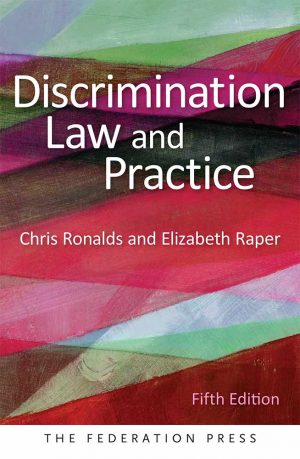The purpose of this text is to provide a teaching/ learning tool within a semester corporations law unit. The use of a plain English writing style, combined with fuller case extracts makes corporations law more accessible to those who study or practise in the area of corporations law.
Since the publication of the third edition there have been significant changes in corporations law. From a legislative perspective, important changes have been effected in regard to the law pertaining to dividends, corporate securities, executive officers and directors (in particular their remuneration and financial reporting).
Judicially, this period has been marked by a considerable number of important cases pertaining to directors’ liability arising out of, inter alia, high profile cases, including the James Hardie cases. These cases have provided guidance as to the applicability of both statutory and equitable directors’ duties, but the penalties flowing from breaches of such duties.
The coverage of the chapters is broad and as well reflecting the content of most courses in Australia, will be a useful reference in any practitioner’s library.
Preface
Acknowledgments
Table of Cases
Table of Statutes
Introduction to Corporations Law
Choosing Between Business Organisations
Corporate Personality
Promoters and Pre-registration Contracts
Registration of Corporations
The Corporate Constitution
Shares and Dividends
Corporate Fundraising
Appointment and Removal of Directors
Directors’ Duties
Meetings
Members’ Remedies
External Administration
Index
Corporations Law: Text and Essential Cases is tailored to teachers and students of Corporations Law. The text follows a university semester syllabus by splitting the subject matter into 13 neat chapters.
[It] is also a handy quick reference guide for the practising practitioner. It is particularly useful where a lawyer needs a refresher of first principles or leading cases without getting bogged down in the minutia.
The book has the added virtue of being written in clear plain language and has ample sub-headings which makes for easy reference.
I would recommend this book to students and teachers of Corporations Law, as well as to practitioners who require an easy-to-use reference guide of the broad subject matter.
Katerina Pshenichner, Ethos (ACT Law Society), June 2014
Reviews of previous editions:
…an easy to understand, yet comprehensive overview of the Australian corporations law system. The book is well set out with the summary of the legislative provisions along with the fundamental principles of the case law, and where relevant sizable extracts from the case law. … I would certainly highly recommend this book to all students studying corporations law, and anyone who wanted a quick summary of corporations law.
Ethos, Law Society of ACT, March 2010
The text is well written and easy to read, with ample case references relating to major developments in the law. The author’s explanation of the relevant cases is clear and easy to understand and the case extracts chosen are pertinent and invaluable to an understanding of the basic principles of corporations law.
The text would be of particular use to those practitioners who deal infrequently with corporations law, providing a useful and thorough outline of the relevant principles. …overall, a good guide to corporations law in Australia.
Ethos, Law Society of ACT, June 2008
Although this is presented as a book of text and essential cases it is an extraordinarily useful little book. I come to it as a person who in his heyday was extremely familiar with the ins and outs of the Companies Act 1936 (NSW) (and 1961, 1981), interstate equivalents, and later uniform Acts. However, I find it extremely difficult to relate what I learnt then with the current provision of the Corporations Act which might find itself in s 3417ZVH. I have found this book extremely handy in going straight away to the appropriate heading via the index and seeing the current provisions spelt out very clearly. I suspect that people coming into corporations law for the first time would find it equally helpful. Apart from very clear expositions of the basic principles of corporations law, the extracts from the cases that are set out cut to the quick. One does not have to read five or six pages of text before getting to the key points in the judgment, but often only two or three paragraphs of the leading judgments will be set out. Moreover, the judgments that are set out are not always the ones that are featured in the classic textbooks but include extracts from modern, yet obscure cases in which the judge has very clearly set out in precise words the applicable principle. Although the book is designed specifically to meet the needs of students undertaking one semester case based course in corporations law, it is, as I have said, generally useful.
Justice Peter Young, Alternative Law Journal, Vol 79 (2005)
[This book’s] purpose is to cover the major topics of corporations law and explain fundamental concepts within those areas. Acknowledging those limited aims, it succeeds very well. Each chapter begins with an overview. The text flows easily with approporiate, logical headings and subheadings. Professor Cassidy has an admirable ability to express herself clearly and concisely so potentially difficult topics can be easily understood by students and readers unfamiliar with the subject. The book contains many case extracts – around 60 in total. The judgments selected are relevant and each passage is preceded by a headnote where the important facts are outlined and the judgment of the court explained. It follows that the cases selected will, I expect, help the reader more fully understand the critical issues underpinning our corporations law. Professor Cassidy believes the case extracts make the book more useful for legal practitioners in preparing submissions and opinions, and I agree with her. … [T]he book easily reaches the goal it sets out to achieve, that is, to explain the corporations law clearly and well, and in plain English. Those qualities will make it a valuable aid for both students and practitioners.
Christopher Crawford, (2005) 26 Qld Lawyer






